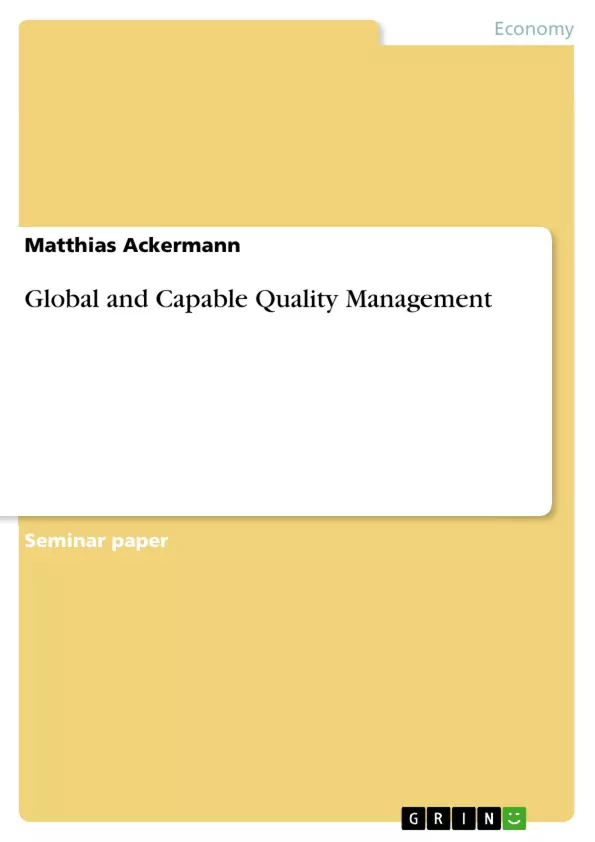The idea of globalization has been evolving for centuries and still has not stopped. Visionary enterprises have recognized that competitive advantages can be gained with an effective globalization strategy. Many companies have established recognizable competitive advantages in their industry, but to be part of the global arena they spent many years in learning and implementing their global business models. These global activities can include developing strategic alliances with overseas development and marketing partners, off shoring and outsourcing of their product and service development process, moving operations to other countries, and acquiring companies.
As a result of globalization the competition for global acting companies has changed markedly. The increasing complexity of products and processes, increased environmental and market dynamics, shorter product life cycles, and increasing customer expectations are just some of the current trends. These developments affect the entire organization with all its strategic and operational activities. Thus, the quality manage-ment (QM) of global acting companies faces new challenges were established methods and approaches often reach their limits.
Inhaltsverzeichnis (Table of Contents)
- Introduction
- Entrepreneurial challenges as a result of globalization
- Problem definition and objectives
- Methodical procedure and structure
- Theoretical Basis
- Globalization as a driver of global quality management
- Definition of the term globalization
- Definition of a global organization
- Goals, motives, and risks of globalization
- Quality management and operational excellence
- Definition of the term quality
- Total quality management and excellence models
- From total quality management to global quality management
- Quality management as basis of business success
- Customer satisfaction through fulfillment of requirements
- Strategic quality deployment
- Financial effects of quality
- Globalization requirements on quality management
- Benchmarking in Context of Global Quality Management
- Study of Fraunhofer Institute
- Study design and results overview
- Challenges of global organizations
- Success factors
- Benchmarking project of University St. Gallen
- Benchmarking design and results overview
- Success factors
- Excerpt of the annual global quality benchmarking 2015
- Comparison of the study and the benchmarking
- Design
- Success factors
- Conclusion and Outlook
Zielsetzung und Themenschwerpunkte (Objectives and Key Themes)
This book aims to provide a comprehensive understanding of global quality management and its impact on business success. It explores the theoretical foundations of globalization and quality management, examines the challenges and success factors of global organizations, and analyzes real-world examples through case studies.
- The role of globalization in shaping the landscape of quality management
- The critical link between quality management and business success
- Key challenges faced by global organizations in implementing effective quality management systems
- Identifying and analyzing success factors for achieving global quality excellence
- The role of benchmarking in facilitating the adoption of best practices in global quality management
Zusammenfassung der Kapitel (Chapter Summaries)
The introduction of this book sets the stage by outlining the challenges that businesses face in today's globalized world. It introduces the concept of global quality management and highlights its importance for achieving competitive advantage. The book then delves into the theoretical foundations of globalization and quality management, defining key terms and exploring the motivations and risks associated with globalization. It also discusses the evolution of quality management principles, from total quality management to global quality management, and examines the connection between quality management and customer satisfaction, strategic deployment, and financial performance.
Further chapters focus on the practical aspects of global quality management. The book explores the challenges and success factors of global organizations through case studies of the Fraunhofer Institute and the University of St. Gallen. These studies shed light on the specific issues encountered by multinational corporations in managing quality across borders, including cultural differences, communication barriers, and the need for standardization. The book also examines the role of benchmarking in driving continuous improvement and facilitating the adoption of best practices in global quality management.
Schlüsselwörter (Keywords)
This book focuses on the intersection of globalization and quality management, exploring key concepts such as global quality management, total quality management, benchmarking, customer satisfaction, operational excellence, and strategic quality deployment. It analyzes the challenges and success factors of global organizations in achieving and maintaining high levels of quality across borders. Key terms and concepts include: globalization, quality management, global quality management, operational excellence, customer satisfaction, benchmarking, standardization, cultural differences, success factors, and challenges.
- Citation du texte
- Matthias Ackermann (Auteur), 2016, Global and Capable Quality Management, Munich, GRIN Verlag, https://www.grin.com/document/345455



